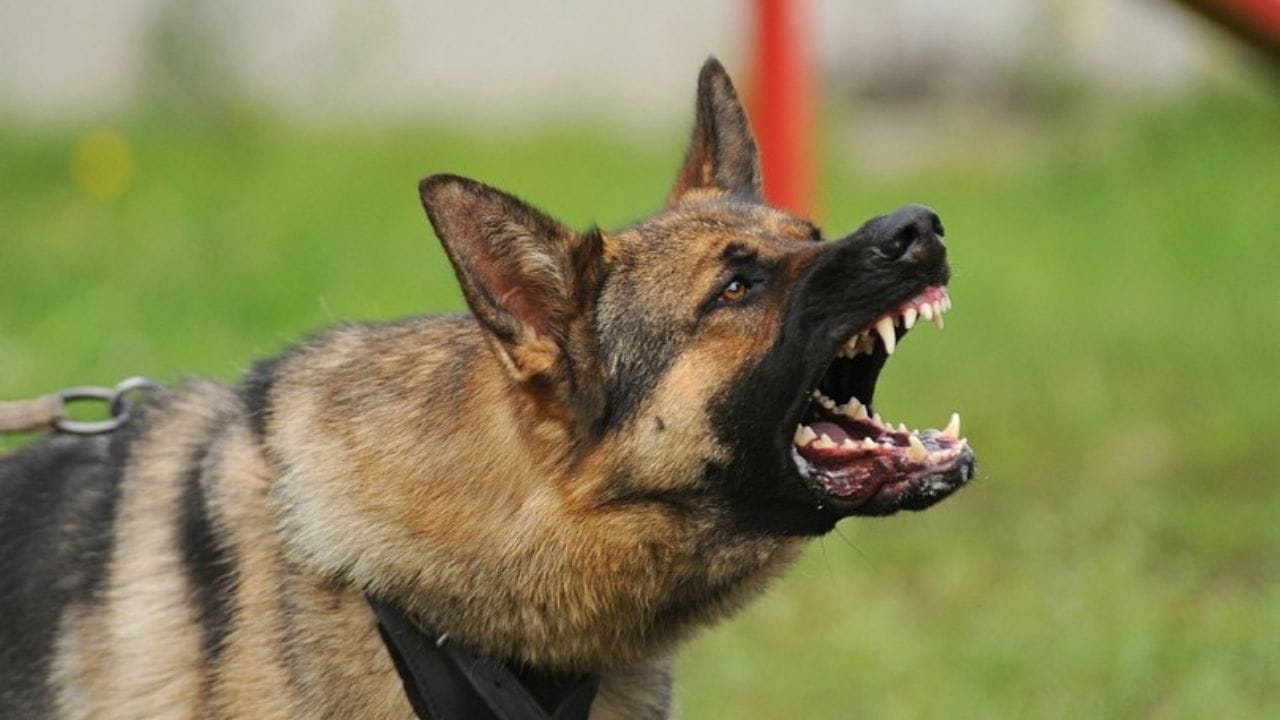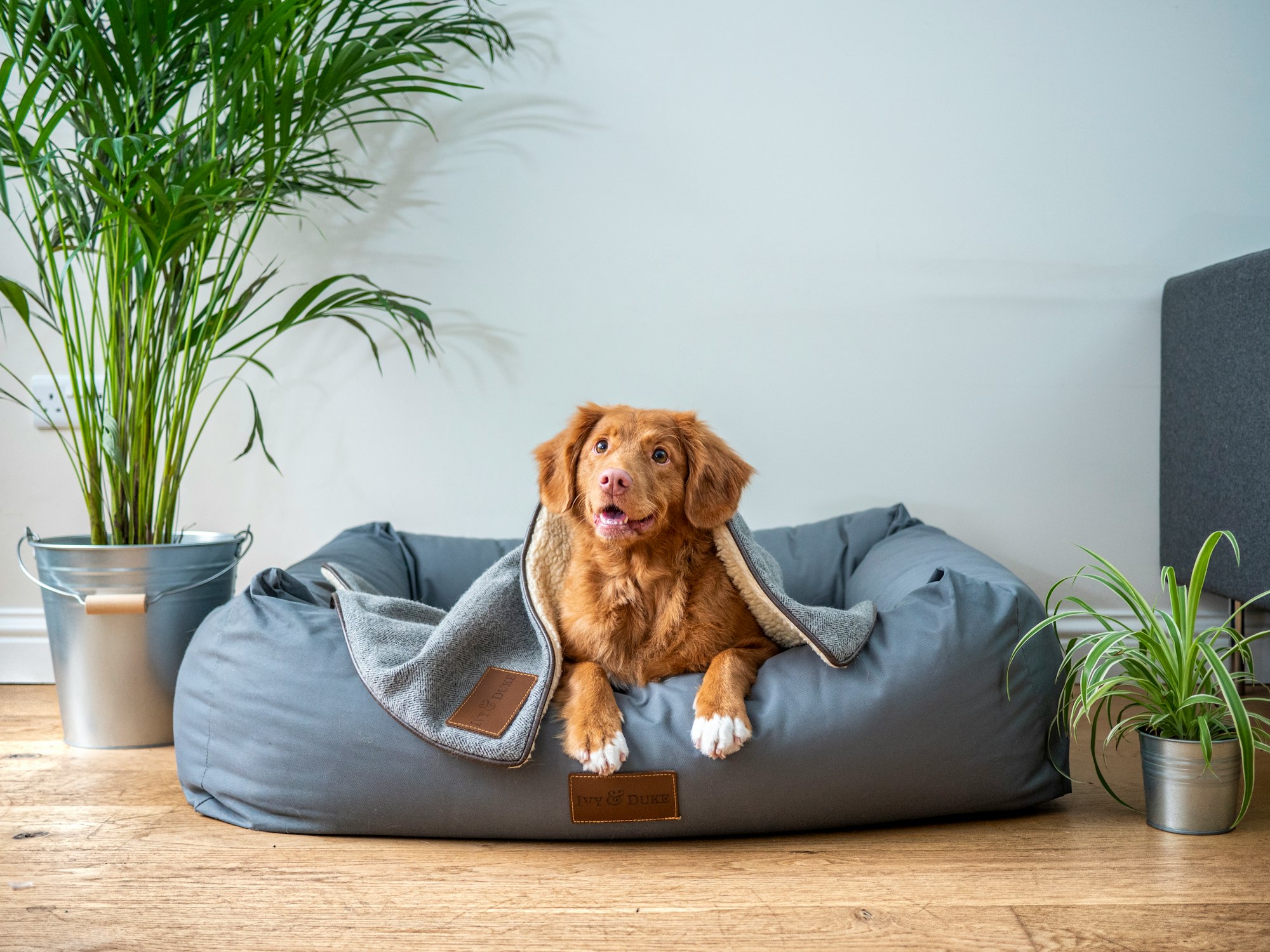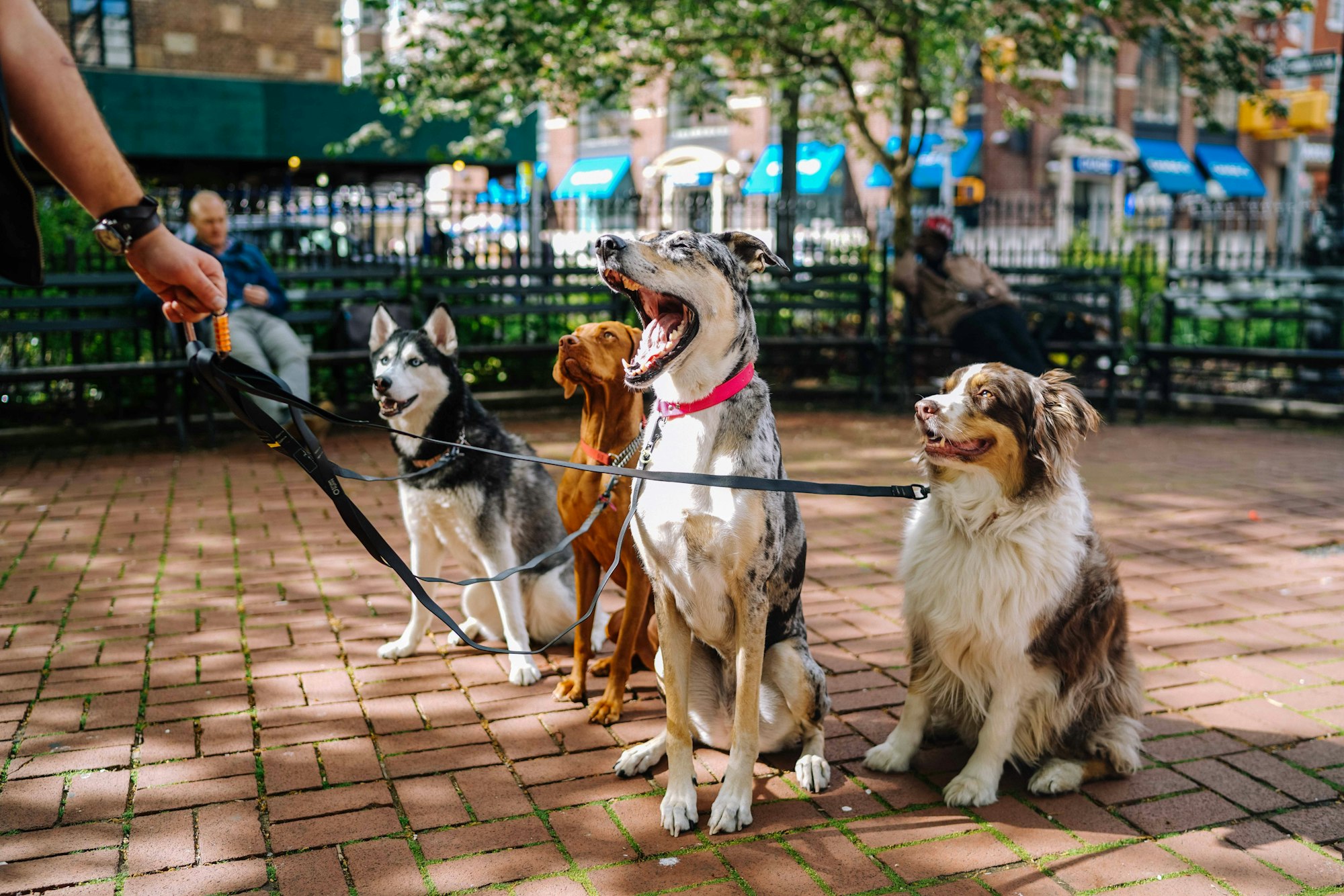Overprotective dogs can be a challenge for even the most experienced dog owners. These dogs may exhibit aggressive or anxious behavior when they perceive a threat to their owners or territory. While some level of protectiveness is desirable in dogs, overprotective behavior can be dangerous and difficult to manage.

Understanding the root causes of overprotective behavior is essential to addressing the issue. Some dogs may have a genetic predisposition to protectiveness, while others may have learned the behavior from past experiences. Regardless of the cause, overprotective dogs require careful training and socialization to help them feel secure without exhibiting aggressive behavior.
Key Takeaways
- Understanding the root causes of overprotective behavior is essential to addressing the issue.
- Training and socialization are key to managing overprotective dogs.
- Safety precautions should be taken when dealing with overprotective dogs to prevent injury.
Understanding Overprotective Dogs
Defining Overprotective Behavior
Overprotective behavior in dogs is characterized by excessive guarding or protective behavior towards their owner, family members, or territory. This behavior is often rooted in the dog's protective instincts, which can be triggered by fear, anxiety, or a sense of vulnerability. Overprotective dogs may exhibit behaviors such as growling, barking, lunging, or even biting when they perceive a threat to their owner or territory.
Recognizing Signs of Overprotectiveness
It is important for dog owners to be able to recognize signs of overprotectiveness in their dogs. Some common signs include:
- Growling or barking at strangers or unfamiliar animals
- Refusing to let strangers approach their owner or family members
- Guarding their food or toys
- Exhibiting tense body language, such as stiffening or raised hackles
- Acting aggressively towards other dogs or people when on walks or in public places
Owners of overprotective dogs should seek professional help from a qualified dog trainer or behaviorist to address the issue. It is important to note that overprotective behavior in dogs is not the same as aggression, and can often be corrected with proper training and socialization.
Understanding and addressing overprotective behavior in dogs is crucial for ensuring the safety and well-being of both the dog and their owner. By recognizing the signs of overprotectiveness and seeking professional help, owners can help their dogs overcome this behavior and live happy, healthy lives.

Causes of Overprotective Behavior
Dogs can exhibit overprotective behavior for a variety of reasons. Understanding the underlying causes can help owners address the behavior and prevent it from escalating. Here are some of the most common causes of overprotective behavior in dogs:
Breed Characteristics
Certain breeds, such as German Shepherds, are known for their protective instincts. While these instincts can be beneficial in some situations, they can also lead to overprotective behavior if not properly managed. It's important for owners to research their dog's breed and understand the potential for protective behavior.
Lack of Socialization
Dogs that have not been properly socialized may become overprotective of their owners or their home. Socialization involves exposing dogs to a variety of people, animals, and environments in a positive and controlled manner. Without proper socialization, dogs may perceive unfamiliar people or situations as a threat.
Past Experiences
Dogs that have experienced trauma or abuse in the past may become overprotective as a way to cope with their anxiety. Rescue dogs, in particular, may exhibit overprotective behavior as a result of their past experiences. It's important for owners to work with a professional trainer or behaviorist to address any underlying anxiety or trauma.
Overall, understanding the causes of overprotective behavior in dogs can help owners address the behavior and prevent it from escalating. By providing proper socialization, managing breed-specific instincts, and addressing underlying anxiety or trauma, owners can help their dogs feel safe and secure without exhibiting overprotective behavior.

Training Strategies
Establishing Leadership
Establishing leadership is crucial when dealing with overprotective dogs. Dogs are pack animals and need to know their place in the pack. Owners should establish themselves as the pack leader and make it clear to their dogs that they are in charge. This can be done by setting rules and boundaries and enforcing them consistently. Dogs should be trained to follow commands such as ""sit,"" ""stay,"" and ""come"" to establish their obedience and respect for their owner.
Obedience Training
Obedience training is an important aspect of training overprotective dogs. It teaches them to obey commands and helps to establish their place in the pack. Owners should start with basic commands such as ""sit,"" ""stay,"" and ""come"" and gradually move on to more advanced commands. It is important to be consistent with training and to reward good behavior.
Positive Reinforcement Techniques
Positive reinforcement techniques are effective in training overprotective dogs. This involves rewarding good behavior with treats, praise, or playtime. It is important to use positive reinforcement consistently and to avoid punishing bad behavior. Owners should also be patient and understanding when training their dogs, as it may take some time for them to learn new commands and behaviors.
Overall, training strategies for overprotective dogs should focus on establishing leadership, obedience training, and positive reinforcement techniques. By following these strategies, owners can help their dogs to become well-behaved and less overprotective.
Socializing an Overprotective Dog
Importance of Early Socialization
Socialization is a crucial aspect of a dog's development and can help prevent overprotective behavior. Early socialization should begin when the dog is a puppy and continue throughout their life. Introducing them to various people, animals, and environments can help them become more comfortable in different situations.
Introducing New People and Animals
When introducing a new person or animal to an overprotective dog, it's important to take things slow and allow the dog to approach on their own terms. Encourage positive interactions by rewarding good behavior with treats and praise. It's also important to supervise interactions and intervene if necessary to prevent any aggressive behavior.
Managing Social Interactions
Managing social interactions is key to preventing overprotective behavior in dogs. This includes teaching the dog basic obedience commands such as ""sit"" and ""stay"" to help them stay calm in social situations. It's also important to limit the dog's proximity to guests or strangers until they become more comfortable and less reactive.
Overall, socializing an overprotective dog requires patience and consistency. By gradually exposing them to new people and animals and managing their interactions, owners can help their dogs become more confident and less reactive in social situations.
Exercise and Stimulation
Dogs are active animals that require regular exercise and mental stimulation to maintain their health and well-being. Overprotective dogs, in particular, need a healthy outlet for their excess energy and attention-seeking behavior. In this section, we will discuss some physical exercise routines and mental stimulation activities that can help keep your overprotective dog happy and healthy.
Physical Exercise Routines
One of the best ways to provide your overprotective dog with the exercise they need is to take them for regular walks. Walking not only provides physical exercise but also mental stimulation as your dog gets to explore their surroundings. It is recommended to take your dog for at least two walks a day, each lasting around 30 minutes.
In addition to walks, you can also engage your dog in other physical activities such as playing fetch, tug-of-war, or going for a swim. These activities not only provide physical exercise but also help strengthen the bond between you and your dog.
Mental Stimulation Activities
Mental stimulation is just as important as physical exercise for dogs, especially overprotective ones. Engaging your dog in mentally stimulating activities can help reduce their anxiety and boredom, which can lead to destructive behavior.
One way to provide mental stimulation is by using puzzle toys. These toys require your dog to solve a puzzle to get a treat, which can keep them occupied for hours. You can also teach your dog new tricks or provide them with obedience training to keep their minds active.
Another way to provide mental stimulation is by giving your dog attention and affection. Overprotective dogs often crave attention, so spending quality time with them can help reduce their anxiety and make them feel loved.
In summary, providing your overprotective dog with regular physical exercise and mental stimulation is essential for their health and well-being. By engaging them in activities that meet their energy and attention needs, you can help reduce their anxiety and keep them happy and healthy.

Safety Precautions
When dealing with an overprotective dog, safety precautions are crucial to ensure the safety of both the dog and the people around them. Here are some safety precautions to consider:
Using Muzzles and Leashes
Using muzzles and leashes can be an effective way to manage an overprotective dog. Muzzles can prevent the dog from biting or nipping, while leashes can help control the dog's movements. However, it is important to note that muzzles and leashes should be used as a temporary solution while working on training the dog to be less overprotective.
Muzzle training can also be beneficial for overprotective dogs. This involves gradually introducing the dog to the muzzle and rewarding them for wearing it. It is important to use a properly fitted muzzle and never leave a muzzled dog unattended.
Creating Safe Spaces for Guests
It is important to create safe spaces for guests when dealing with an overprotective dog. This can include setting boundaries for the dog and providing a separate area for guests to be in. It is also important to educate guests on how to interact with the dog and to never approach or touch the dog without permission.
In addition, it may be helpful to provide the dog with a safe space to retreat to when feeling overwhelmed or anxious. This can be a crate or a designated area in the home where the dog feels comfortable and secure.
By implementing these safety precautions, owners can help manage an overprotective dog and create a safe environment for both the dog and those around them.
Dealing with Aggression
Identifying Triggers
Identifying the triggers that cause aggression in your overprotective dog is the first step in dealing with the problem. Some dogs may become aggressive due to fear, while others may be overprotective of their territory or their owners.
It is important to observe your dog's behavior and identify the specific triggers that cause aggression. For example, if your dog becomes aggressive when a stranger approaches your home, it may be due to territorial aggression.
Professional Intervention
Dealing with an overprotective dog can be a challenging and potentially dangerous task. It is important to seek professional help if you are unable to manage your dog's behavior on your own.
A behavior consultant or professional trainer can help you identify the underlying causes of your dog's aggression and develop a customized training plan to modify their behavior.
In severe cases, medication may be necessary to manage your dog's aggression. However, this should only be done under the guidance of a veterinarian.
Remember, aggression in dogs should never be taken lightly. It is important to take the appropriate steps to ensure the safety of both your dog and those around them.

Choosing the Right Dog
When looking for an overprotective dog, it is important to choose the right breed and temperament. Below are some factors to consider:
Understanding Guard Dog Breeds
Not all dog breeds are suitable for guarding and protection. Some breeds are naturally more protective than others. German Shepherds, for example, are known for their protective nature and are commonly used as police and military dogs. Other breeds that make good guard dogs include Rottweilers, Doberman Pinschers, and Bullmastiffs.
It is important to note that just because a breed is known for being a good guard dog, it doesn't necessarily mean that every dog of that breed will have the same temperament. Each dog is unique and will have its own personality and characteristics.
Assessing Dog Temperament
When choosing an overprotective dog, it is important to assess the dog's temperament. Look for a dog that is confident, alert, and has a strong protective instinct. A dog that is too aggressive or fearful may not make a good guard dog.
It is also important to consider the dog's training and socialization. A well-trained and socialized dog will be more confident and better able to handle different situations. Look for a dog that has been trained in obedience and has been exposed to different people and environments.
In conclusion, choosing the right dog is essential when looking for an overprotective dog. Consider the breed's natural tendencies and assess the dog's temperament and training. With the right dog, you can have a loyal and protective companion by your side.
Frequently Asked Questions
How can I stop my dog from being overprotective of our home?
If you want to stop your dog from being overprotective of your home, you need to teach your dog that you are the pack leader and that you will take care of any threats. You can do this by training your dog to obey your commands and by socializing your dog with other people and dogs. It's important to be consistent with your training and to reward good behavior.
What are the steps to reduce my dog's protective behavior towards me around other dogs?
To reduce your dog's protective behavior towards you around other dogs, you need to socialize your dog with other dogs and teach your dog to trust you. You can do this by exposing your dog to other dogs in a controlled environment and rewarding good behavior. It's important to be patient and to avoid punishing your dog for being protective.
What could be causing my dog to suddenly become more protective of me?
There are several reasons why a dog may suddenly become more protective of its owner. It could be due to a change in the dog's environment, a traumatic experience, or a medical condition. It's important to consult with a veterinarian to rule out any medical issues and to work with a professional dog trainer to address the behavior.
What are effective training methods to curb overprotective tendencies in dogs?
Effective training methods to curb overprotective tendencies in dogs include positive reinforcement, socialization, and obedience training. It's important to be consistent with your training and to reward good behavior. It's also important to avoid punishing your dog for being protective, as this can reinforce the behavior.
How can I safely manage a dog that is defensively aggressive?
If you have a dog that is defensively aggressive, it's important to work with a professional dog trainer to address the behavior. You should also take steps to manage the dog's environment, such as keeping the dog on a leash and avoiding situations that trigger the aggression. It's important to never punish or physically harm the dog for its behavior.
What strategies can I use when I feel unable to control my overprotective dog?
If you feel unable to control your overprotective dog, it's important to seek help from a professional dog trainer. You should also take steps to manage the dog's environment, such as keeping the dog on a leash and avoiding situations that trigger the behavior. It's important to never punish or physically harm the dog for its behavior.




